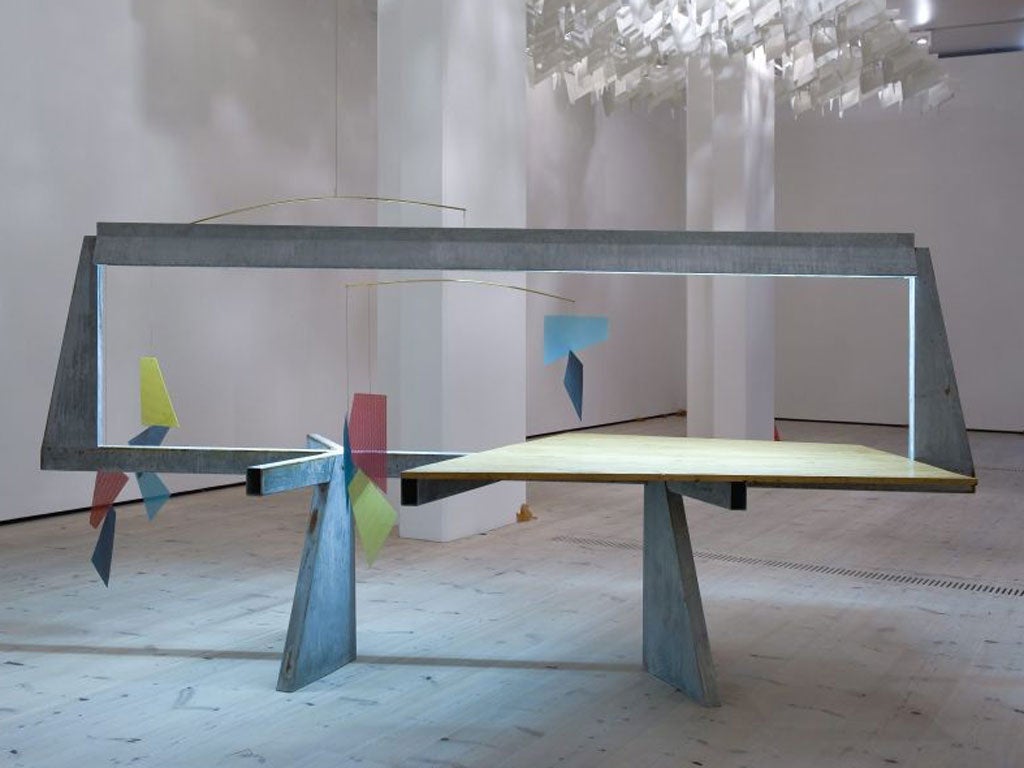Laura McLean Ferris: A sense of the heavenly in a depressing urban setting
There is still something within this sort of design that believes it can change the world

Martin Boyce created a rather gorgeous, atmospheric installation for his Turner Prize exhibition in Baltic, which was scattered with cream-coloured light thrown around by pale tree-like forms. It marked a slow gradual trajectory in the artist's work over the last five years or so.
Boyce's earlier installations matched "icons" of modernist design, such as Arne Jacobsen's Series 7 chairs – which hung from mobiles like limbless ghosts – with a faintly depressing, urban environment. Although this was a popular subject for artists at the turn of the millennium, no artist consolidated this as a form of intellectual feeling as much as Boyce.
His public bins at skewed angles owe much to the American sculptor Robert Gober, but while Gober's wonky sinks, baths and playpens recall beautiful, yet softly suffocating domestic interiors, Boyce's art brings to mind far more public spaces – parks, council estates, telephone booths and urban playgrounds.
There is something far more optimistic in the artist's recent work – and it's perhaps significant that the times themselves are more depressing than they were five or 10 years ago.
Boyce has been fascinated for several years by the 1925 concrete trees of Joël and Jan Martel, and at Baltic he used these forms to create a kind of urban glade sheltering a library table (based on a design by Jean Prouvé). Though the desk was scratched with a kind of angular graffiti, this gave the scene a prosaic realism.
There is still something within this sort of design that believes it can change the world. The sense of flight created by the angular fin shapes that top Boyce's tree designs accentuate this sense of possibility. Modernism might be dead, but, in the art of Martin Boyce, possibility is still alive. We're just still working on it, scratching away at our desks in mild frustration.
Join our commenting forum
Join thought-provoking conversations, follow other Independent readers and see their replies
Comments